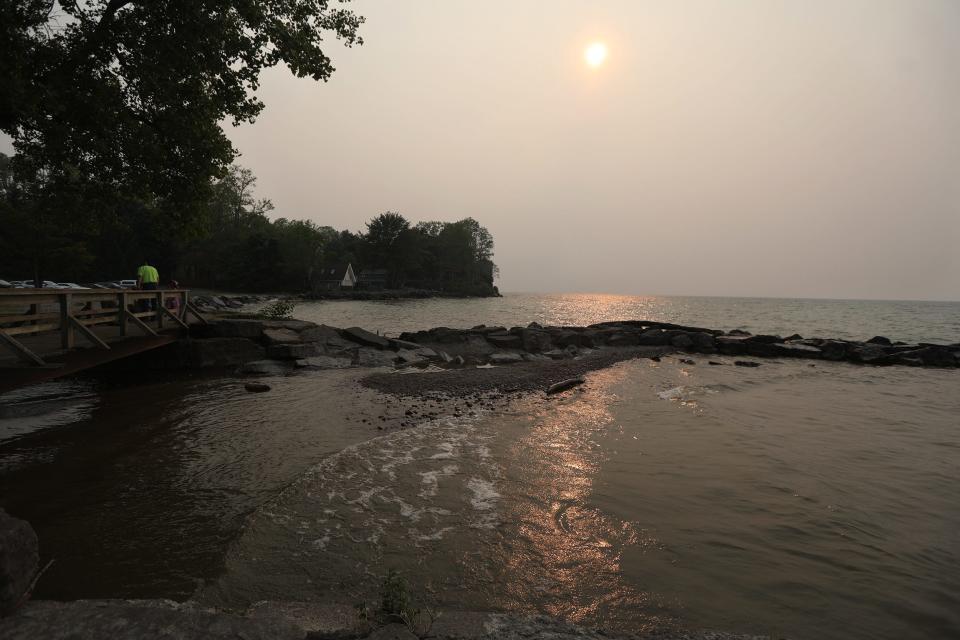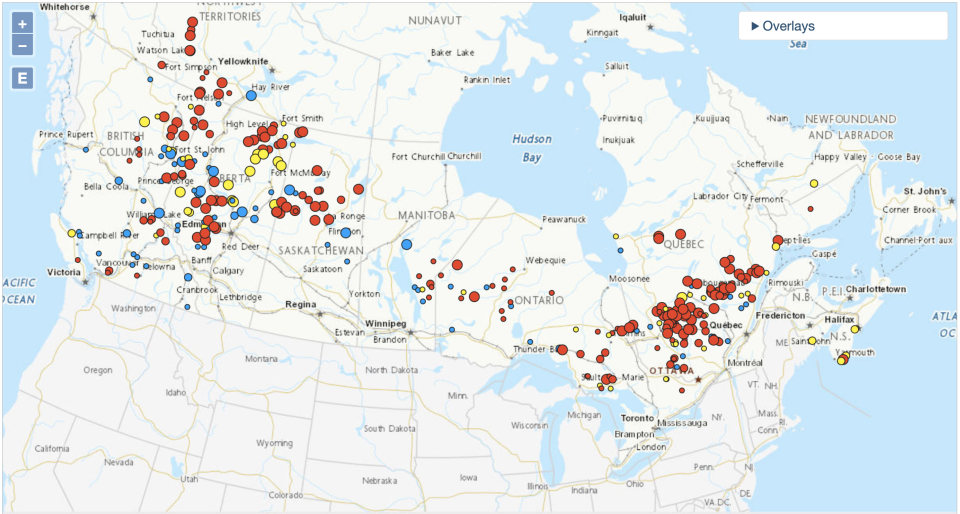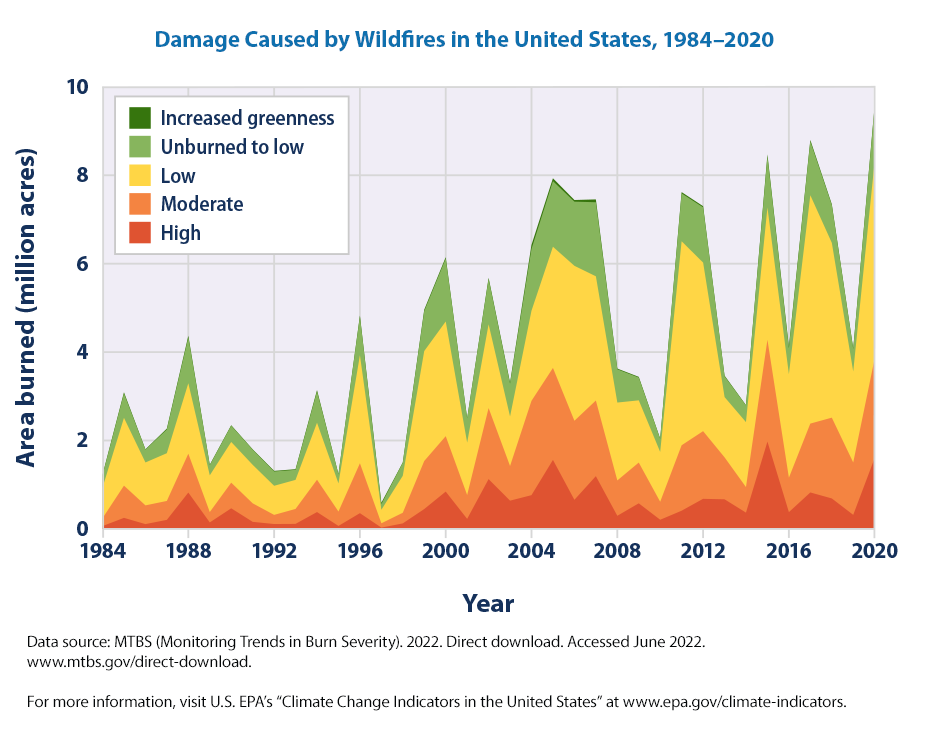Wildfire smoke shows you can't hide from new climate reality in New York
Sand from Mongolia travels hundred of miles before whipping an underprepared cosmopolitan Beijing. Glaciers melt and the sea rises. Smoke from wildfires lifts and swirls down from Canada and across New York State, forcing people indoors and endangering those with health conditions.
These are the effects of climate crisis, experts say. As our planet heats, more every year, the fuel for wildfire dries out, more cropland turns to dust and air patterns can be intensified. It's the new reality, not an anomaly.
Welcome to a wildfire smoke show.
As haze penetrated deep down the East Coast this week, skies turned white or brown or gray, sunsets became dramatic, masks discarded from the pandemic were re-found and people with asthma and other lung and heart conditions worried and struggled. Runners canceled group plans for Global Running Day on June 7, and workers who can't miss a paycheck continued to labor outdoors.

"It’s under-appreciated on the East Coast," said climate data expert Dr. Edward Kearns of First Street organization. "I think folks out West that live with a higher probability of wildfire, they appreciate it more because it often impacts their daily lives. But it is not just a western state problem, it is a whole country, whole continent, whole world problem."
The unhealthy air is expected to continue. An air quality alert for all of western New York − and nearly the entire state − has been issued through Wednesday by the National Weather Service.
Amazed by how wavy/ extreme this jet stream structure is. Record warm oceans, developing El Nino, Typhoon Mawar wave breaking, climate change ice melt & uneven heating of the Arctic vs mid-latitudes. Excess energy = extremes. And we ain't seen nothing yet. 1/ pic.twitter.com/HQTbx6b6Y6
— Jeff Berardelli (@WeatherProf) June 6, 2023
How far is the wildfire smoke traveling from?
Smoke from wildfires in Canada continued to drift into the U.S. this week, prompting air quality alerts. In addition, a wildfire in New Jersey caused travel problems in that state and added to the air quality issues in the Northeast and mid-Atlantic.
Fires in the eastern Canadian province of Nova Scotia have prompted air quality warnings across the U.S. East Coast and elsewhere, USA TODAY reported.
It's been a terrible season for wildfires in Canada. In total, more than 4 million acres have burned in 2,305 fires in Canada so far this year. As of June 7, Canada has 245 wildfires burning out of control, according to the Canadian Interagency Forest Fire Centre, including dozens in Ontario, Quebec and Nova Scotia. Quebec alone has 154 active wildfires.

According to the EPA:
Intense heat from by a wildfire drives smoke to a high altitude. It falls once it cools and as the smoke gets closer to the ground, "it becomes more diluted and often more widespread."
Smoke can travel thousands of miles, so the impact can reach far from the source of the fires. The same winds that can whip a wildfire into a frenzy also can carry the hazardous particles to distant cities.
Near-real-time air quality data and forecasts are available to the public via AirNow.gov, including continuous particle pollution data from over 1,700 monitors, and temporary monitors that monitor smoke on an hourly basis during a wildfire
Are wildfires connected to climate change?
Yes.
Kearns said that rising global heating caused by manmade carbon emissions is providing better base conditions for wildfires.
"Wherever you have vegetation, you have fuel for wildfires, but on the East Coast… there is an emerging risk," he said. "As the fuel gets drier with increasing air temperature, it doesn’t take long for fuels to go to very dangerous."
NOAA prepared a wildfire report that pointed squarely at the climate crisis. "Research shows that changes in climate create warmer, drier conditions, leading to longer and more active fire seasons. Increases in temperatures and the thirst of the atmosphere due to human-caused climate change have increased aridity of forest fuels."

In some parts of the Northeast, the number of hot days per year is expected to double this year compared to a normal summer of several decades ago. The change is due to fossil fuel emissions trapping heat in the atmosphere. First Street and other weather and data partners forecast that some areas of the Northeast will experience triple the number of hot days every year by the end of this decade.
Kearns says the plants, shrubs and trees in the Northeast only take 1,000 hours to dry out to wildfire-fuel condition.
More: Rochester has the worst air quality in the U.S. right now, some of unhealthiest in world
More: Tips to reduce smoke exposure indoors during Rochester's air-quality alert
In the past, wildfires have been more prevalent in the West. The East Coast will start to experience the same issues with global warming, he said, and governments and fire teams are not ready in this region.
U.S. Global Change Research Program prepared a special report for the Fourth Assessment of climate change as it surveyed climate studies related to things like wildfires:
Higher temperatures and vapor pressure deficits due to manmade climate change have increased forest fire activity in the western United States by increasing the aridity of forest fuels during the fire season.
Increases in these relevant climatic drivers were found to be responsible for over half the observed increase in western U.S. forest fuel aridity from 1979 to 2015 and doubled the forest fire area over the period 1984–2015.
Manmade climate crisis and the legacy of land use have an influence on U.S. wildfires and "are subtly and inextricably intertwined. Forest management practices have resulted in higher fuel densities in most U.S. forests."
The Democrat & Chronicle is investigating the effects of a rapidly heating planet on people who live in our city. Follow along with "City on Fire" as we report the struggle with summer temperatures. This is part of the USA TODAY project Perilous Course. Contact journalist William Ramsey to be included in a story if you have been affected by heat: expense of air conditioning or lack of it, health risks, less access to green space, concern about pets and animals in the summer conditions, worry about an older loved one, etc.
USA TODAY contributed information for this report.
This article originally appeared on Rochester Democrat and Chronicle: Wildfire smoke in Rochester NY from Canadian shows climate reality

